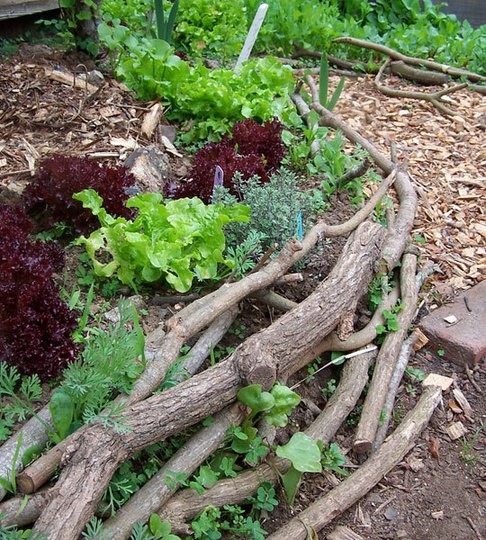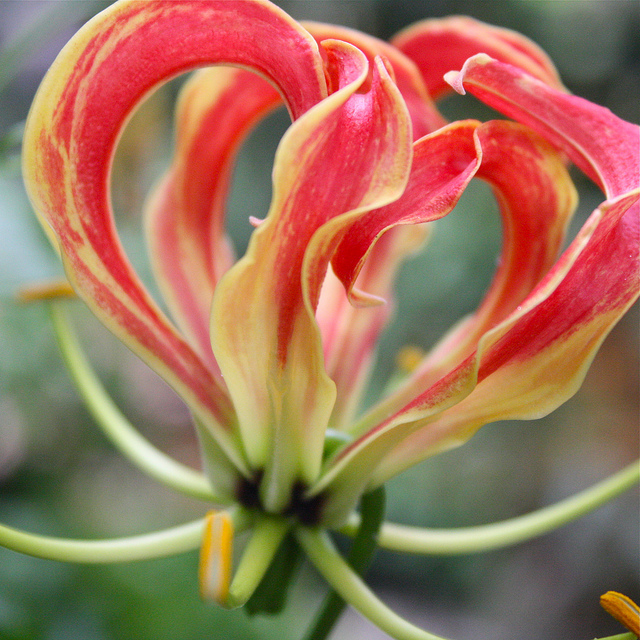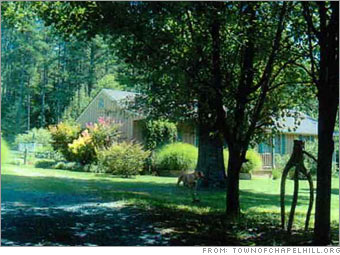This continues the list of sustainable landscape and gardening tips from last month. If you missed last month’s Jungle Taming newsletter, you can find it online here.
1. Cover crops: Vegetable gardeners often use cover crops to enrich the soil and help the garden resist weeds. You can do the same for landscape areas that won’t be planted immediately (like an area to be planted with turf in spring). Legumes especially add nitrogen to the soil, and all cover crops will improve soil texture when turned under.
2. Don’t spray insecticides prophylactically, but inspect often and catch problems early.
3. Windy day—don’t spray!
4. Keep and eye out for weeds when you mow and rake—there’s not another time when you so carefully look at every square foot of your lawn.
5. Corn gluten is a non-toxic pre-emergent weed control. Some of the synthetic weed control chemicals have been linked to cancer, endocrine disruption, birth defects and ecological detriment.
6. Turn off your irrigation system timer. Water when the garden needs it—check the plants and the soil, not the calendar. Use the timer only when you’re on vacation.
7. Dispose of unused pesticides and containers properly and promptly.
8. With chemicals, don’t buy more than you’ll need—fire ant baits go bad, lime and fertilizers absorb water and become difficult cialis no percription to use, and who wants to store toxic chemicals at home?
9. Use deciduous trees to provide shade. Trees actually cool better than fabric shades—in addition to blocking the sun, they cool by evapotranspiration.
10. Reduce turf area, and grow your lawn organically. Lawns require more water and more work than planting beds.
11. Green roofs reduce run-off and urban temperatures, and they last a long time. Think about it when it’s time to re-roof or add an addition.
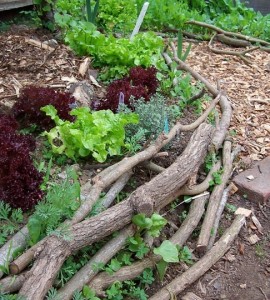 12. Use water permeable hardscapes to reduce run-off. Even concrete can be made permeable these days.
12. Use water permeable hardscapes to reduce run-off. Even concrete can be made permeable these days.
13. Fallen branches can be used as edging for paths and woodland beds.
14. Buy recycled plastic furniture, decking, composters, edging—complete the cycle.
15. Rain gardens capture rain water that would otherwise contribute to flooding, erosion and storm damage. So do rain barrels and cisterns.
16. Wetland buffers help protect waterways from pesticide and fertilizer run-off. See: www.clemson.edu/psapublishing/pages/WATER/WQL22.pdf.
17. Plan for wildlife—think water, food and shelter. Include ponds, fountains, birdbaths or drippers. You’ll do more for butterflies if you plant host plants for caterpillars along with nectar plants. Evergreen trees and shrubs provide more nesting sites for birds. Native flora usually provides better than exotic plants for our native fauna.
18. Reduce outdoor lighting—motion detectors, lower wattages, compact fluorescents, and LEDs can reduce your electricity use. Reduce light pollution by choosing fixtures with deflectors. Don’t install more lighting than you need—your house should not rival the airport at night.
19. Use leaves as mulch—they’re free for the raking, and they work great. If the look is not what you want, put a thin layer of a different mulch on top of the leaves.
20. Compost or vermicompost (See www.compost.org. Click “welcome”).
21. A barrier of copper will exclude slugs and snails from your plants. Copper tapes and roofing flashing are both effective. If a barrier is not practical, beer (or any liquid with yeast and sugar) traps will capture slugs and snails.
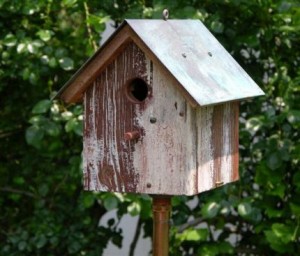 22. View plant and seed catalogs online to save trees and reduce pollution.
22. View plant and seed catalogs online to save trees and reduce pollution.
23. Shelter wildlife with birdhouses, bat houses, bee tubes, toad houses, as well as evergreen shrubs and trees. And dead trees–many critters depend on dead wood for food and shelter.
24. Leave the clippings on your lawn when you mow. The only time you should remove what the mower picks up is when there are numerous weed seeds present.
25. Educate yourself and your neighbors, and advocate for better gardening practices.
Useful Links
Rain Garden and Harvesting – http://dnr.wi.gov/topic/Stormwater/raingarden, www.clemson.edu/public/carolinaclear/cc_toolbox/tools_pubs.html#pubs_rg
Natural Landscaping – www.for-wild.org/whenciti/ingram-1.htm
One Person Can Make a Difference – www.for-wild.org/download/onepersn.html
Handling Granular Pesticides and Fertilizers – www.gardening123.com/basf/GranularPresentation.pdf
Beyond Pesticides – www.beyondpesticides.org
Integrated Pest Management – http://extension.psu.edu/ipm, www.epa.gov/pesticides/factsheets/ipm.htm
Lawn Maintenance without Pesticides – www.pesticide.org/solutions/home-and-garden-toolbox/landscape-and-plant-solutions/lawns, www.savingwater.org/docs/natlawncare.pdf
Pest & Weed Control without Pesticides – www.pesticide.org/solutions/home-and-garden-toolbox/weed-solutions/weed-solutions, www.panna.org/resources/advisor
Organic Gardening Tips – www.organicgardentips.com
Grow Smart, Grow Safe Guide – www.oregonmetro.gov/index.cfm/go/by.web/id=558
Clemson Publications – www.clemson.edu/psapublishing (free publications), https://shopping.clemson.edu (for sale publications)
Search Extension Resources – e-answers.adec.edu
Pesticide Action Network – www.panna.org
Gardener’s Guide to Global Warming – http://www.nwf.org/~/media/PDFs/Global-Warming/Reports/Gardeners_Guide.ashx
Washington Toxics Coalition – www.watoxics.org
SC Native Plant Society – www.scnps.org
Urban Tree Care – www.clemson.edu/extfor/urban_tree_care/index.html
Columbia Tree & Appearance Commission – ctaconline.info


